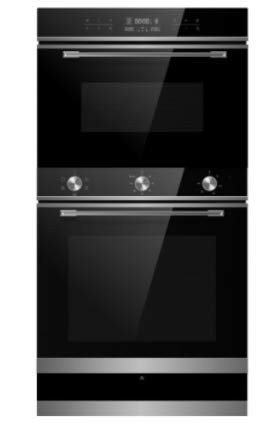The Complete Guide to Ovens and Hobs: Choosing the Right Appliances for Your Kitchen
When it pertains to developing culinary work of arts, the significance of quality kitchen devices can not be overstated. Ovens and hobs are the heart of any kitchen, enabling home cooks and professional chefs alike to produce, bake, and sauté delicious meals. Comprehending the various kinds of ovens and hobs, along with their features and performances, is vital for making informed buying decisions. This article offers a thorough take a look at ovens and hobs, assisting you navigate the options readily available so that you can enhance your kitchen's performance and flexibility.
Understanding Ovens
Ovens are important for cooking and baking and can be found in different types to fulfill diverse culinary requirements. Here is a summary of the most common kinds of ovens:
1. Standard Ovens
Conventional ovens work by heating up the air inside with gas or electric elements. They are perfect for baking cakes, roasting meats, and cooking casseroles.
2. Convection Ovens
These ovens utilize a fan to distribute hot air, offering an even temperature level throughout, which can significantly lower cooking times. They are perfect for baking cookies or roasting vegetables.
3. Microwave Ovens
Microwaves prepare food quickly utilizing electromagnetic radiation. They are ideal for reheating leftovers or thawing frozen foods but are not appropriate for browning or crisping.
4. Wall Ovens
Integrating a wall oven into your kitchen design can conserve space and create a smooth visual. They function similar to standard or convection ovens but are built into the wall for easy gain access to.
5. Variety Ovens
These ovens combine stovetop burners with an oven, offering versatility for those who choose a single device for all cooking requirements.
| Type | Cooking Method | Best For |
|---|---|---|
| Standard | Electric/Gas | Baking, roasting |
| Convection | Air blood circulation | Quick cooking, even baking |
| Microwave | Electro-magnetic | Reheating, defrosting |
| Wall Ovens | Electric/Gas | Space-saving, smooth design |
| Range Ovens | Electric/Gas | Versatile cooking |
Checking out Hobs
Hobs, also referred to as cooktops or stovetops, offer the surface area to prepare pans directly over a heat source. Like ovens, hobs come in numerous types, which can be categorized as follows:
1. Gas Hobs
These hobs utilize a flame for cooking and offer immediate heat control. They are favored by lots of chefs for their responsiveness and accuracy.
2. Electric Hobs
Electric hobs use coils or flat surfaces to heat pans. They provide a constant heat source, but they may take longer to cool off compared to gas hobs.
3. Induction Hobs
Induction hobs use electromagnetic energy to heat pots and pans straight, making them extremely effective and faster to cook. They are also much easier to clean up as the surface stays fairly cool.
4. Solid Plate Hobs
These are older innovation that uses strong metal plates to supply heat. They are long lasting but are less effective than modern-day choices.
| Type | Heat Source | Benefits | Downsides |
|---|---|---|---|
| Gas Hobs | Flame | Instantaneous heat control | Requires gas connection |
| Electric Hobs | Electric coils | Consistent heat | Slower to cool down |
| Induction Hobs | Electro-magnetic | Quick cooking, energy-efficient | Requires compatible cookware |
| Solid Plate Hobs | Solid metal plate | Durability | Less effective |
Picking the Right Appliances
Selecting the ideal oven and hob for your kitchen involves considering numerous elements:
1. Space and Layout
Measure your kitchen location to figure out the size and placement of the oven and hob. Ensure there is appropriate ventilation, particularly for gas home appliances.
2. Cooking Style
Think about how often you prepare and the kind of meals you prepare. A stove may suit devoted bakers, while someone who regularly stir-fries may choose an induction hob.
3. Energy Source
Decide on the energy source that best fits your lifestyle. Gas uses instant control, while electric and induction hobs provide ease of usage and are frequently more energy-efficient.
4. Budget
Recognize your budget for kitchen appliances. Ovens and hobs vary considerably in price, depending upon features and brand names. Prioritize vital functions that meet your requirements.
5. Functions
Search for performances such as self-cleaning choices, wise technology compatibility, particular rack setups for ovens, and security functions for hobs.
Often Asked Questions (FAQs)
Q1: What is the distinction in between a traditional oven and a convection oven?A1: Conventional ovens heat up the air inside without fans, while convection ovens use a fan to distribute hot air for more even cooking. Q2: Can I use aluminum cookware on induction hobs?A2: No, induction hobs need ferrous (magnetic )materials like cast iron or stainless steel to work successfully. Q3: Do gas hobs heat faster than electric hobs? Best Oven And Hob : Yes, gas hobs provide immediate heat, making them quicker for cooking compared to electric hobs. Q4: Is it safe to utilize a microwave oven?A4: Yes, when utilized according to the producer's guidelines, microwave ovens are thought about safe for cooking.
Q5: How often must I clean my oven and hob?A5: For optimum performance, clean your oven routinely, specifically after spills. Hobs need to be wiped down after each usage
to prevent buildup. Ovens and hobs
are indispensable parts of a fully equipped kitchen. Understanding the various types, their performances, and the considerations included in purchasing
them can significantly enhance cooking experiences. Whether one is a casual home cook or a professional chef, investing time in selecting the ideal appliances can lead to culinary success and fulfillment in the kitchen. By prioritizing features that line up with your cooking design, energy sources that fit your home, and budget considerations, you can create an effective work space that motivates cooking imagination.

